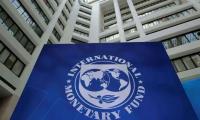The writer is a lawyer
Until earlier this year, Imran Ali Chishti’s fame was restricted to a small quarter of Nankana Sahib, and the 79 followers on his YouTube channel.
Chishti, whose channel features a collection of naat performances with gratuitous doses of echo and reverb, also doubles as a self-proclaimed healer of kidney stones and arthritis. Like many an inadvertent internet influencer, he likely did not anticipate his first video to go viral.
As Chishti and a mob of a few hundred followers besieged the Gurdwara of Guru Nanak, the city’s venerated eponym, he bellowed threats against the Sikh community, vowing to have them expelled from the city. The city, in turn, would be rebranded Ghulaman-e-Mustafa, he proclaimed. All this while several Sikh pilgrims were inside the gurdwara.
The police eventually dispelled protesters, announcing that all was well; but by then, the video was already occupying pixels across the border. Indian media houses that had spent the past weeks bending over backwards to lasso Pakistan into the mess created by the CAA and the NRC were manic. Amit Shah smacked lips glazed with vindication. This was exactly why India needed the CAA: “Where are Pakistan’s Sikhs supposed to go?”
As warfare sprouts progeny, and newer generations swap bombs for bytes and barbs, for India to be able to parry back for their violence with the ruins of the Gurdwara would have been a resounding blow to Project #PositiveImage ™.
India, too, understands this. It has, for years, played the same game – only, at GMT +5:30. (See, for example, clips of the reformed Butcher of Gujarat sniffing elephant dung with Bear Grylls. In a PR move that would make OJ Simpson blush, the man responsible for over a thousand deaths over the course of a month reluctantly agrees to hold a makeshift spear – but only to hold it – as his upbringing does not allow him to harm anyone.)
A frantic Pakistan Ministry of Foreign Affairs issued a fantastically unconvincing statement to the effect that the Gurdwara incident was little more than a storm in a tea cup – a ‘minor incident at a tea stall’. “Attempts to paint this incident as a communal issue are patently motivated”, it assured the world.
Later details revealed that the incident really did begin over a cup of tea (Chishti’s uncle found a fly in his cup), but none of this made the mob’s chants any less real for the cowering worshippers in the Gurdwara. At the end of the day, the incident was about as much about tea as Rosa Parks’ protest was about the upholstery of her seat.
Eventually, domestic and global outrage seemed to click, and Chishti was booked under the non-bailable Section 7 of the Anti-Terrorism Act. The Gurdwara remained intact, as did the Pak Franchise of Project #PositiveImage™.
Fast forward a couple of months. In Delhi, a saffron flag is hoisted above a charred minaret. Modi and Shah continue their patented volte-face act. The Donald-Modi bromance blossoms unfazed: Modi beams as The Donald continues to mispronounce words in one city after the next. A little blood only makes your hands less likely to be shaken when your pockets are empty.
Back in Pakistan, Imran Khan takes to Twitter in a prime-ministerial told-you-so. “As I had predicted in my address to UN GA last yr, once the genie is out of the bottle the bloodshed will get worse”, he tweets.
“I want to warn our people that anyone in Pakistan targeting our non-Muslim citizens or their places of worship will be dealt with strictly. Our minorities are equal citizens of this country.”
The usual fawning ensues. It is welcome stuff from a prime minister. There is salvation, there is salivation. But there is also a catch. Between the two sets of tweets, aided by the police, an ‘Ahmadiyya place of worship’ was attacked in Kasur and handed over to a Sunni mob.
Cut to the present. A virus has emerged out of nowhere, swiftly making its way into the lungs and minds of the world. The pedestrian grievances of the past are put, momentarily, on hold. But the prime minister has not forgotten about his minorities. He wishes them a happy Easter, before asking them to pray at home. It is a courtesy he does not even extend to his majority.
As the curve continues to tick upwards, the minorities stay on his mind. It is time to finally give them that Commission. It’s been in limbo for years – the Supreme Court raised its brow six years ago – but suddenly, there is no time to wait. The formalities may be dispensed with: forget parliament; the Cabinet will do. Everyone’s favourite minority/non-minority is added to the shopping cart, and removed before checkout.
Even with everything else going on, the prime minister remembers to tweet against the “fascist Hindutva Supremacist RSS-driven ideology” across the border.
It’s great to see a prime minister with a moral compass. It’s great to see it function when, globally, all instruments of navigation seem to have lost their calibration. It’s just unfortunate that this particular compass points only outwards.
When Nankana Sahib happened, the prime minister tweeted: “A major difference between the condemnable Nankana incident and the ongoing attacks across India on Muslims and other minorities is this: the former is against my vision and will find zero tolerance and protection from the government, including police and judiciary.”
But what, exactly is ‘My vision’? More often than not, it’s the Riyasat-e-Madina. On the eve of the PTI’s 25th Anniversary, it was “Jinnah’s vision for Pakistan as a modern Islamic welfare state.”
Over seventy years on, Jinnah’s sepia-tinted Pakistan remains the north star in Pakistan's night sky. But Jinnah’s ‘what-if’ Pakistan, often seems like less of a star and more of a constellation – a celestial Rorcharch test in which some see a suit and others a sherwani; some a shield and others a sword. (Time Magazine, in its 1946 cover story saw the Man with the Angora Cap and the Man with the Monocle).
For all the deveining of Jinnah’s sepia-tinted Pakistan, at some point we must ask how much it ought to matter. Imran Khan may have inherited Jinnah’s Pakistan, but the past is a foreign country.
It’s a cruel joke, then, that it shares the flag.
Today, as one looks at the green and the white, time seems to have decanted the parts from the whole. To look at the ‘parcham-e-sitara-o-hilal’ today is to see the scar that once cleft the green from the white – a perverse reminder of using a theory of two nations to build one.
To gaze down from Attock bridge is to see neither the Indus nor the Kabul, but the boundary between them.
Yes, the India that once decided that all shades of the tricolour were equal must now ask itself why the only colour birthing neologisms is neither green nor white.
We too have questions to answer. If Jinnah’s Pakistan is a constellation, Imran Khan’s often seems like a whole galaxy – ideas and promises bursting in and out of existence like a billion exploding stars. He, too, has questions to answer.
But more importantly, if his dream is to be more than delusion, he will also need a plan. Tomorrow’s piece will suggest some things he may wish to consider.
Because, while Nankana Sahib may not have been engulfed by flames, this isn’t a race to the bottom. And while Imran may be no Modi, the Naya Pakistan that we were promised deserves to be measured against the ceiling, not the floor.
To be continued
Email: salaar.khan@columbia.edu
Twitter: @brainmasalaar
Representational image. — APP FileOnce again there is debate surrounding the National Finance Commission Award,...
Pakistani human rights activist and Supreme Court lawyer Asma Jahangir died on February 11, 2018. — AFPAn annual...
Representational image. — APP FileThe meltdown of Pakistan’s economy needs immediate attention. Political unrest...
A health worker administers polio vaccine drops to a child during a door-to-door polio vaccination campaign in Lahore,...
Armed militants of the banned Tehreek-e-Taliban Pakistan pose for a photograph in Orakzai Agency. —...
An aeroplane of the national flag carrier of Pakistan is seen in this file photo. — AFPWhile Pakistan considers...







